|
Nakajima
B5N2 Kate
by
Ian Robertson
|
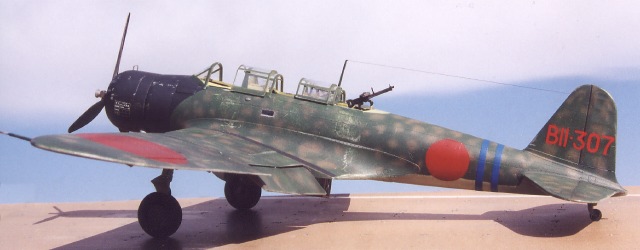
|
|
Dewoitine D.520 |

Hasegawa's 1/48 scale Kate is
available from
Squadron.com
Introduced in 1937 in time to serve in the Sino-Japanese war, the
Nakajima B5N Kate represented a major improvement in Japanese warplane
design over earlier fixed-gear aircraft. Although considered ordinary
and obsolete by the onset of WWII, the Kate played a chief role in the
attack on Pearl Harbor as well as in sinking the US carriers Yorktown,
Lexington, Wasp and Hornet.
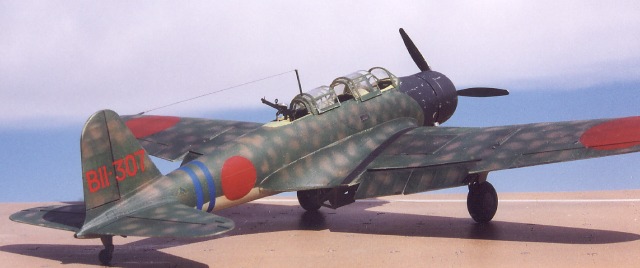
Hasegawa's 1/48 B5N "Kate" has been much anticipated by fans of
Japanese Navy aircraft following the earlier releases of the B7A
"Grace" and B6N "Jill" kits, both of which were superb. The first Kate
version released by Hasegawa was the B5N2 with a centerline 800 kg
bomb. More recent was the release of the B5N1, and later in 2001 a
torpedo-carrying B5N2 is expected, perhaps in time for the 60th
anniversary of the Pearl Harbor attack.
The B5N2 kit for the most part does not disappoint, although there
are numerous distinct ejection pin marks on the inside surfaces of the
cockpit walls that are difficult to remove and bothersome given that
the cockpit is where construction begins. Luckily these blemishes are
hidden in the completed model. The kit provides the option for lowered
wing flaps and a canopy that can be displayed open or closed. Fit is
excellent.
Painting, Markings and Weathering
|
I chose to paint and decal my model in the markings of BII-307, an
aircraft from the carrier Hiryu that participated in the first wave of
level bombing during the attack on Pearl Harbor (note: BII-307 is not
an option in the kit, but its colour scheme is very similar to the
kit's BI-318 option). BII-307 is reported to have had IJN green upper
surfaces with earth brown mottles, and at least one reference claims
that the upper camouflage on this aircraft extended to the outer
folding portion of the underside of the wings. Although the kit
instructions suggest a natural metal finish for the underside, the
consensus in articles at j-aircraft.com was that ame-iro (caramel
color) was more likely.
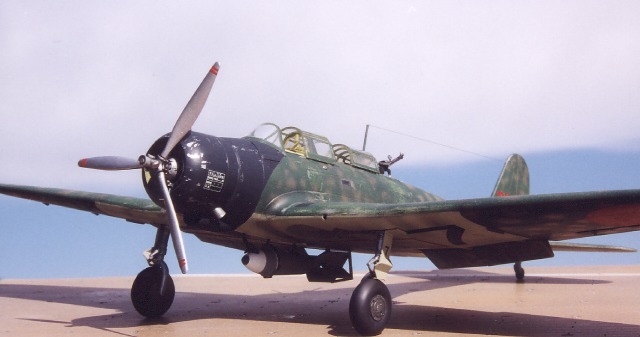
I began by painting my model with an undercoat of SnJ aluminum,
followed by pre-shading in black along panel lines. The ame-iro
underside color was simulated using Tamiya JA Grey (XF-14) mixed with
a touch of the Tamiya flat Earth (XF-52). The upper camouflage
consisted of Aeromaster IJN Green and Tamiya flat Earth mottles. I
painted the cowl a mixture of dark grey and dark blue. Because this
particular aircraft was not represented with kit decals, it was
necessary to mask and paint the blue fuselage bands and the black
numbers on the undersides of the wing (note: there are extra decals
with the kit for any Pearl Harbor carrier aircraft tail code). The
hinomarus were also masked and painted using a mixture of red and
red-brown. The cockpit was painted with Aeromaster Nakajima interior
grey/green.
I weathered the model lightly by chipping paint in a few places on
the cowl and by using fine-grit sandpaper to create minor surface
abrasions on the leading edges of the wings and around the cockpit
entrances. Extensive chipping and weathering did not seem appropriate
for an aircraft participating in the attack on Pearl Harbor, although
in subsequent operations many Pearl Harbor Kates became heavily
weathered.
Additions I made to the kit were etched brass seatbelts and
crosshairs for the machine gun.
The base is a resin 1/48 Japanese carrier deck from "Just Plane
Stuff" - highly recommended.
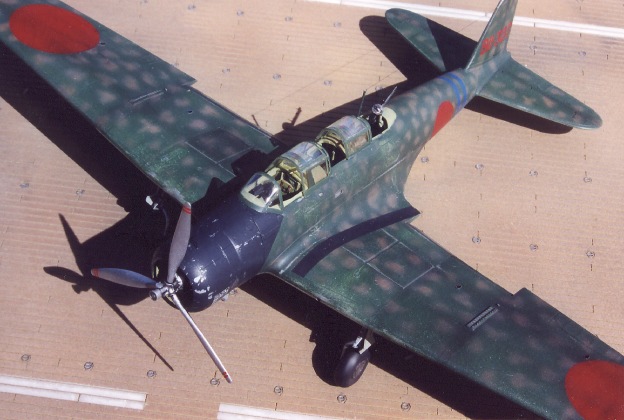
All in all the Hasegawa "Kate" is a quality offering, and unlike
many Japanese Navy aircraft the Kate has a number of interesting
camouflage options.
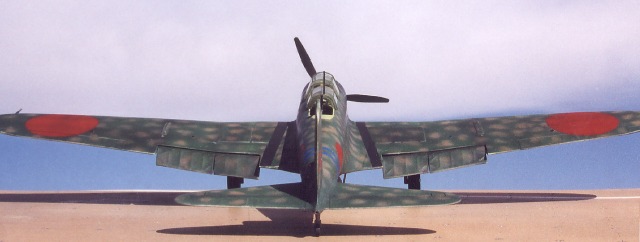
Nevertheless, I still prefer Hasegawa's B6N "Jill", perhaps because
of its more intriguing shape. Although no fault of Hasegawa, the large
bloated wheels on the Kate can't help but make it look toy-like.
Model, Images and Text Copyright © 2001 by
Ian Robertson
Page Created 21 August, 2001
Last Updated
04 June, 2007
Back to HyperScale Main
Page
Back to Features
Index
|
Home
| What's New |
Features |
Gallery |
Reviews |
Reference |
Forum |
Search